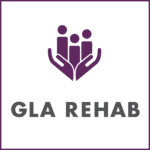In 1981, the Extended Glasgow Outcome Scale (GOS-E) was proposed. It includes 8 categories. The categories of severe disability, moderate disability and good recovery on the original GOS are divided into a lower and upper category.
This outcome is generally assessed at 6 months post-injury.
- Death
- Vegetative State
- Lower severe disability. Completely dependent on others
- Upper severe disability. Dependent on others for some activities
- Lower moderate disability. Unable to return to work or participate in social activities.
- Upper moderate disability- Returned to work at reduced capacity, reduced participation in social activities.
- Lower good recovery. Good recovery with minor social or mental deficits
- Upper good recovery
The assignment of an individual to an outcome category is based on the results of a structured interview. The changes in a person’s life roles are used to assess the impact of impairment and disability caused by a head injury
The structured interview format also allows for the inclusion of pre-injury disability status (Wilson et al. 1998) and provides specific guidance regarding assignment to outcome category (Teasdale et al. 1998).
The GOS rating was intended primarily to provide an overall summary of outcome and facilitate comparison, and was not intended to describe specific areas of dysfunction (Pettigrew et al. 1998).
Pettigrew et al. (1998) developed a brief structured interview that involves a series of questions that consider:
- Independence inside and outside of the home
- Major social roles
- Work
- Social and leisure activities
- Family and friendships
- Return to normal life
The final rating is based on the lowest category of outcome that the assessor determines to be the highest functional level for the client.
It is important to understand the GOS-E and how it is administered as in June 2016, the GOS-E will replace the GCS on the OCF19.
According to June 2016 SABS, if the insured person was 18 years of age or older at the time of the accident, a traumatic brain injury that meets the following criteria:
- The injury shows positive findings on a computerized axial tomography scan, a magnetic resonance imaging or any other medically recognized brain diagnostic technology indicating intracranial pathology that is a result of the accident, including, but not limited to, intracranial contusions or haemorrhages, diffuse axonal injury, cerebral edema, midline shift or pneumocephaly.
- When assessed in accordance with the Glasgow Outcome Scale and the Extended Glasgow Outcome Scale, the injury results in a rating of:
- Vegetative State one month or more after the accident
- Upper Severe Disability or Lower Severe Disability six months or more after the accident, or
- Lower Moderate Disability, one year or more after the accident.
If you would like to learn more about the GOS-E, including strengths and weaknesses and how to administer the protocol, we would be happy to arrange a Lunch and Learn. Please contact us at 416-449-6466 for more information.


